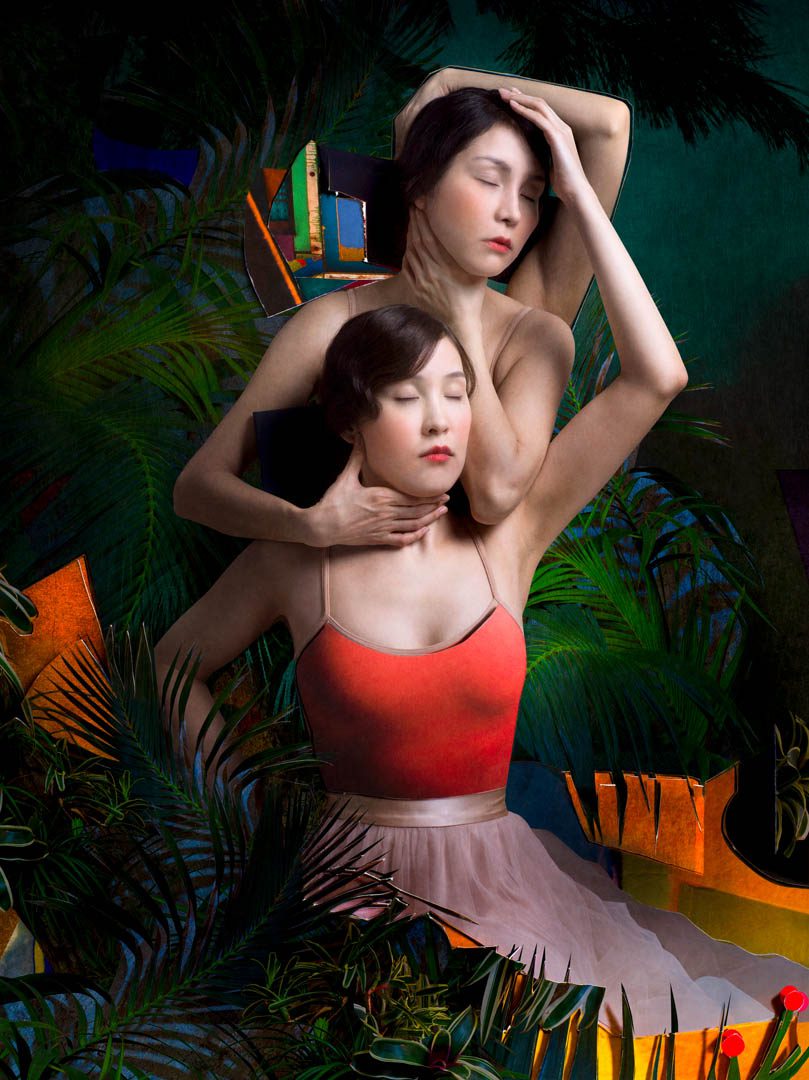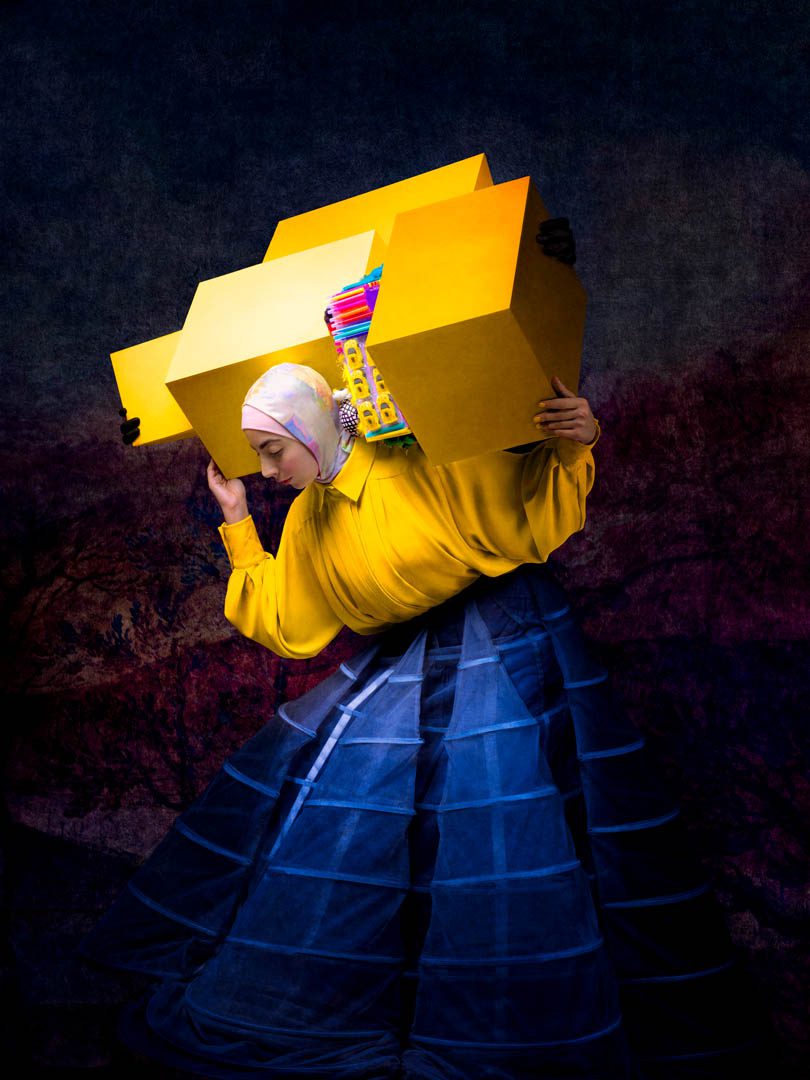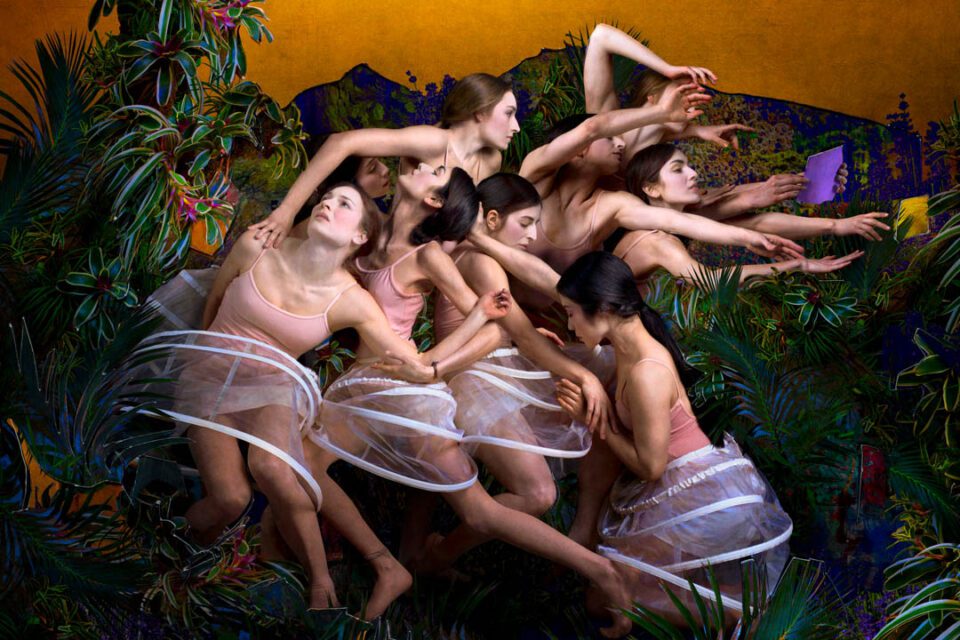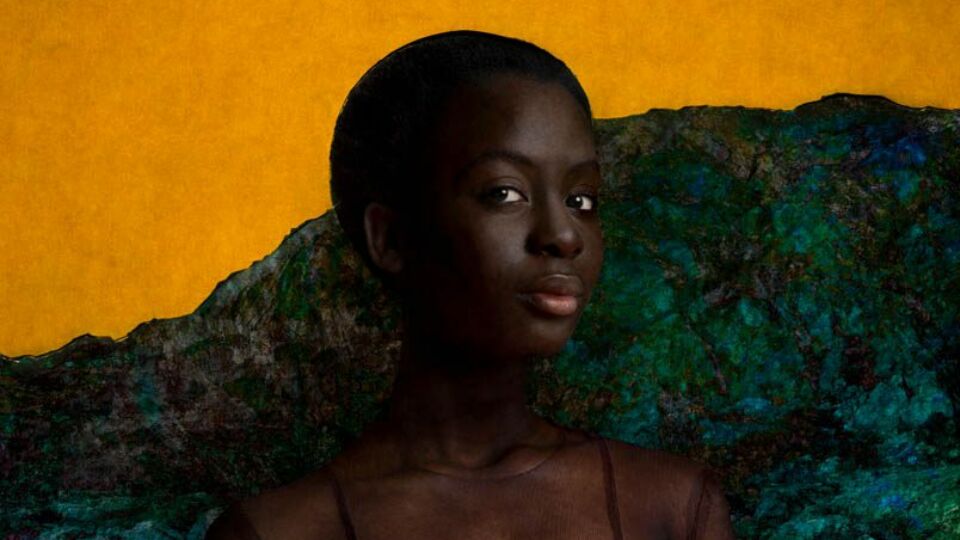The first International Women’s Day was held on 19 March 1911, encouraging over one million supporters from Austria, Denmark, Germany and Switzerland. Its 112th edition is marked on 8 March 2023, an event that remains alarmingly necessary. Over a century after people marched the streets to campaign for greater freedoms, the world continues to restrain them. Women in Afghanistan have been banned from all forms of education; Iran protests Mahsa Amini’s violent death by morality police. The #MeToo movement continues to demonstrate the abuse rife across societies, whilst restrictions to abortion access in Poland and the USA, in January 2021 and June 2022, have removed basic bodily autonomy.
These issues continue to make headlines but, to Sarah Cooper (b. 1974) and Nina Gorfer (b. 1979), they’re not news. Born in the USA and Austria respectively, these artists have collaborated on projects focused on women since 2006, working intimately with subjects to examine female relationships with identity, memory and migration. Their multidisciplinary approach to photography, which incorporates collage, embroidery and painting, transcends the medium to tap into the metaphorical. Through their exuberant portraits, individuals are shaped and overwhelmed by their environments, whilst fantasies enable them to rise up to challenges.

“Our subjects have the power to visualise themselves in new environments,” states Cooper. This subversion of perspective runs throughout their oeuvre. The duo frequently reimagine traditional portraiture, highlighting contemporary experiences through a historical lens. The male gaze – which con- siders men the main audience of the visual arts and relegates women to positions of objectification or sexualisation – has defined centuries of art history. “Women are always carrying out domestic duties, lifting buckets, whilst men are wrestling and throwing javelins,” Cooper states. “We are interested in the catalogue of poses that inspired art, and we twist them.” The canon is evoked through a focus on the sitter’s head and shoulders, bold earthy colour palettes and larger-than-life canvases, but Cooper & Gorfer subvert this dominant perspective. Women hold themselves in confident, defiant poses: bold gestures; stoic gazes, eyes fixed beyond the camera; enveloped in colourful clothing and decadent jewellery. “We’ve been playing with the male gaze through the female gaze.”
Phonecia (2010), for example, details a woman from Qatar in an embroidered, golden veil beneath an ominous, circular sky, reminiscent of John Martin’s (1789-1854) dramatic biblical landscapes. The series Interruptions portrays several generations of Sámi women, with portraits like Maxida with Green Strings (2016) – in which a woman turns away, red and green skirts dancing against a black backdrop – recall 16th and 17th century Dutch Masters. Amanda and the Painted People (2017), contrastingly, is one of several works from I Know Not These My Hands (2011-2017), shot in Argentina, that summons Austrian painter Gustav Klimt (1862-1918) and the Vienna Secession movement. Throughout these series, women are viewed as more than background – or entirely absent – figures and exhibitions. Instead, they are elevated to the central focus: they become immortalised. “Women have this goddess status, staring down at you from the walls,” remarks Cooper. “It gives power to the subjects.” Between These Folded Walls, Utopia (2017-2020) embodies this style of portraiture, depicting young women who have lived or intergenerational experience of forced migration in bold, luxurious positions. Cooper & Gorfer use these pho- tographic narratives to exemplify and examine the intersections of feminism, migration and racism and, in November 2022, its accompanying photobook (Max Ström, 2021) was awarded 2nd place in the International Photography Awards.
In Yellow Roseline (2020), a woman poses in an extravagant burnt orange dress, whilst palm leaves surround two serene figures in Sister Holding Heads in Hands (2020), their arms arranged in an elaborate configuration. Hybridity is a central aspect of their visual storytelling. The artists ask each model to provide an item from their family and culture – which are often little more than fragments of clothing or a small token – to collage into the visionary portrait. Cooper likens each image to a “kaleidoscope” that incorporates an individual’s current situation, their memories and defining experiences.

There is beauty in this patterning of objects, colours and shapes, but the collages also highlight the multiplicity of identity and belonging. Forced to start life anew in a different country, or the second and third generation of migrants, these women describe a disconnect from their heritage. Through Cooper & Gorfer’s lens, they are transformed, becoming outward reflections of their diverse backgrounds and intergenerational stories. “What we make is not a documentary,” Cooper explains. These assemblaged portraits rejects conventions of photojournalism. Rather than drawing attention to external views of migration, the artists turn inward. “We reflect the inner lives and power of these women.”
This is evident in the documentary short film the artists created alongside the portraits, in which four of the models discuss their experiences of forced migration and the impact this has had on their self-perception. Segal is an activist, playwright and poet born in Sweden to Somalian refugees. “What is my purpose here?” she asks. “Why is someone’s view of me where I am a statistic – or a colour, a body or a gender – an opinion that’s validated?” Like Segal, Cooper & Gorfer question the dehumanisation of these women, their reduction to data and collective archetypes of the migrant experience. Instead, their focus remains on each woman as an individual with unique dreams, influences and aspirations.
“Utopia” was coined by Sir Thomas More for his 1516 book, taken from the Greek and meaning “no place” or “a place that does not exist,” though it is commonly defined as a state of perfection. Cooper & Gorfer were inspired by this duality – a state of unachievable idealism – and suggested that utopia, therefore, was a space that had to be constructed. Parwana, for example, is featured throughout the series. She is origi- nally from Afghanistan, became a refugee in Iran and then travelled to Sweden, alone, at 16. “I realised I had lost myself along the way,” she states, discussing when her family joined her two years later. “But I couldn’t remember where. I didn’t have any hopes or dreams left.” From this, Cooper & Gorfer discussed what the loss of the idea of utopia would mean, and who would be able to achieve this state. The resulting images in Between These Folded Walls, Utopia create a space for women who had lost or not had the opportunity to truly imagine, placing the definition of utopia within their hands.

Moreover, Cooper & Gorfer highlight the importance of fantasy to visualise alternative futures and alter dominant perceptions. Current exhibitions worldwide are using speculative photography to expose and counter narratives that discriminate and marginalise. Ekow Eshun’s group exhibition In the Black Fantastic (2022), for example, at the Hayward Gallery, London, drew on myth and Afrofuturism to address ongoing racism and social injustice, whilst A Gateway to Possible Worlds at Centre Pompidou-Metz, Lorraine, which runs until 10 April, draws on intersections of art and science fiction to examine faults in 21st century society. Cooper & Gorfer heighten surreal aspects of their work through elements of the otherworldly – hands sprout from walls, whilst furniture replaces human limbs – and invite speculative thinking.
In their exhibition at Fotografiska, New York, in 2021, viewers become more than spectators to this alternative universe. Instead, individuals were engulfed by immense canvases, with lush vegetation springing from behind the portraits and artwork overflowing onto the walls. It is a theatrical world heightened by the size of the portraits, reinforcing the women’s strength and power – a symbol of their goddess status.
Scale is hugely important to their iconography. “An image is successful when it becomes an immersive experience,” Cooper says. The artists also allow the architecture of the space to influence their installation process, curating unique design experiences. “The position of the images create dif- ferent associations that you will never get from looking at images online,” Gorfer says. “Individuals are moved in the physical sense.” This imaginative production – in which dreaming of a world so vividly conjures it into being – hark- ens back to their understanding of a self-constructed utopia.
Now in their 40s, Cooper & Gorfer are also increasingly interested in the physical experience of inhabiting a female body. Their latest project, When We Are Giant (2022-ongoing), represents the layers that make up individuals, each characterising “the different shells we inhabit.” Caricaturised women explode from canvases, an assemblage of collage, painting and photography that highlight women undergo- ing physical transformation. “We want to dissolve some of our own insecurities surrounding body issues and existing in spaces,” Gorfer states. These women are multifaceted and expansive. At once, they are the real, uninhibited selves of the artists, the personae they feel obliged to create and the different masks they use to succeed or hide within society.

Preconceived notions of femininity are also deconstructed within When We Are Giant. The women’s colossal forms are attributed to Greek mythology. “Immortal women don’t have the fears and worries attributed to a mortal life. You are going to have a long life, so you take control of it in a revered manner,” Cooper explains. “We’ve lost that idea of what power and beauty can be.” Women are again likened to divinity: monumental and physically imposing. “Giant arms might not be a stereotypical attribute of beauty,” Gorfer points out, “but they can crush you. They are useful.” The return to legend in Cooper & Gorfer’s latest work counters negative connotations associated with women’s physical strength, allowing them to transcend restrictive boundaries and ensuring their models occupy the space they deserve.
When We Are Giant is the first instalment in a broader series of the artists’ work that continues to dismantle perceptions of women – both physical and internal. Cooper & Gorfer illustrate a reality where women’s rights are unrestricted, opportunities are uninhibited and self-expression is limitless. At the centre of the work are individuals whose powerful and defining portraits epitomise the strength required to drive change.
Words: Diane Smyth
Between These Folded Walls, Utopia, Max Ström
Image Credits:
1. Cooper & Gorfer, Yellow Roseline (2020).
2. Cooper & Gorfer, Sisters Holding Heads in Hands (2020).
3. Cooper & Gorfer, Israa with Yellow Boxes (detail) (2020).
4. Cooper & Gorfer, Envious Bodies (2020).
5. Cooper & Gorfer, The Golden Maryan (2020).





